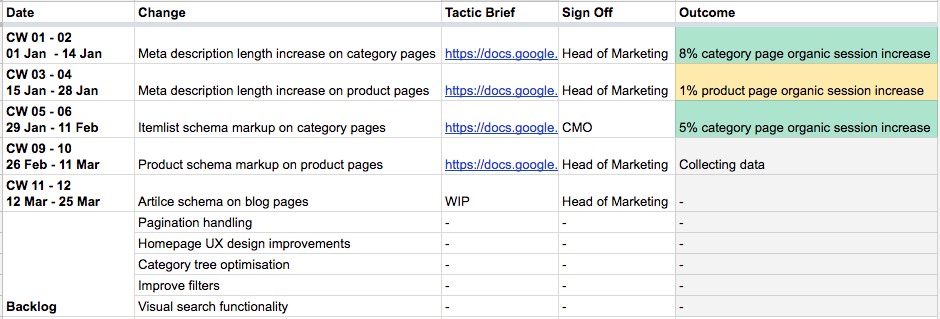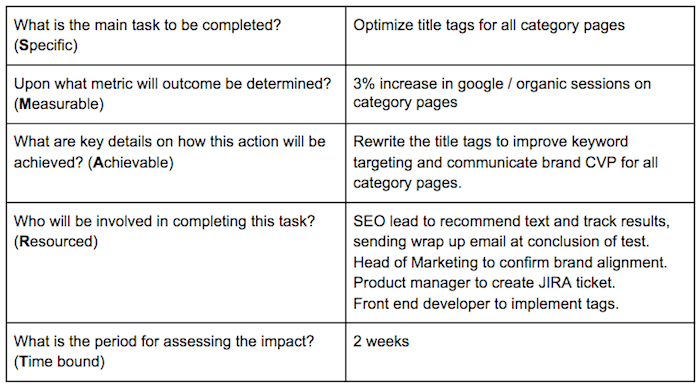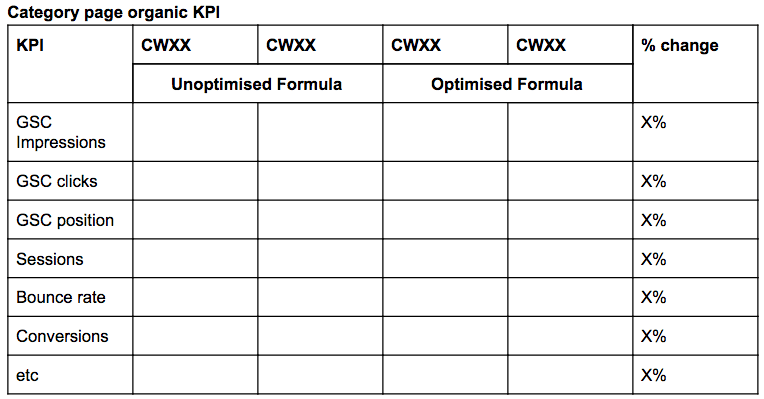Impactful SEO is rarely executed by a lone wolf.
You need resources. You need buy-in from higher-ups – a CMO, head of product, or even CEO.
But here’s the thing: those lengthy SEO documents outlining objectives, audiences, competitors, keywords, and that six-month Gantt chart vaguely detailing optimization projects – they’re not getting read.
On the contrary, it is a roadblock to you getting a green light for resources.
An executive can quickly scan one short email containing a clear request and sign off. However, they need to set aside dedicated time to read a strategy document in depth – and time is not something executives have a lot of.
And even if they sign off today, the reality is business priorities shift. Competitive landscapes change. Algorithms are updated.
SEO is executed in a constant state of flux. It demands flexibility on a monthly, even weekly basis.
So, let’s ditch the long documents and prioritize actions over proposals with agile SEO.
Why Agile SEO Strategies Work
Agile SEO involves incremental iteration.
Break complex, overarching projects down into small, frequent changes.
Enable continual progress.
 Image from author
Image from authorForget the pursuit of SEO perfection.
The key is to launch a minimum viable product (MVP) and monitor the impact on metrics.
Once you are armed with performance data, you can move on. The key performance indicator (KPI) impact will get you buy-in for the resources you need.
Let me give you an example.
Say your overarching goal is to completely overhaul the website architecture of an e-commerce site – all the URL routes, page titles, meta descriptions, and H1s for the homepage, category pages, and product pages.
The Old Way: One Giant Leap
The traditional approach involves pitching the entire SEO project at once. Your argument is that it’s good for SEO.
The site will rank higher and significantly impact the organic sessions. Which is true.
However, the document communicating all the reasons and requirements is complicated to review.
The project will seem too large. It will likely not make it onto your development team’s roadmap, as they will likely feel your request will overload their development cycle.
 Image from author
Image from authorAgile SEO Approach: Small Iterations
What if you broke it down into micro-wins?
Instead of pitching the entire project, request approval for a small but impactful change.
For example, optimizing the title tag and meta description of the homepage.
The documentation for this will be less than one page. The change request is equivalent to snackable content. Because it’s easy to implement, it’s much easier to incorporate it into a development sprint.
Now, say this quick change positively impacts KPIs, such as a 3% lift in homepage organic sessions. You can then argue for similar changes for the category pages, pointing out that if we get a similar KPI lift as we did for the homepage, this will achieve X more organic sessions.
You have already proven such tactics can increase KPIs. So, there is more trust in your approach. And it’s, again, a small request. So, your development team is more likely to do it.
And you can rinse and repeat until you have the whole site migrated.
How To Document An Agile SEO Strategy
So now we know to stop writing long SEO strategy documents and instead start creating agile, “snackable” tactics.
But we still need to understand what:
- Has been completed in the past.
- Is being worked on now.
- Is coming up next.
- All the ideas are.
This information must be easy to digest, centrally accessible, and flexible.
One solution for this is an “SEO calendar” document.

Elements of an SEO calendar:
- Date column: Ideally matched against IT sprint cycles. This does not mean every SEO initiative involves IT. But if you need a developer’s assistance, it will simplify cross-functional team projects. Having it set, for example, every two weeks also promotes small but constant releases from the SEO team.
- Backlog: This provides space for team members to record ideas without having to make any significant commitment of time. Assess all ideas regularly as you fill your next available calendar slot.
- Change column: A clear and concise sentence on what has been or will be changed.
- Tactic brief: A link to the detailed information of that test. More details coming below.
- Sign off: Ensuring all SEO changes pass a four-eye principle from a strategic point of view lowers the risk of any errors. These quick-to-read, snackable briefs make it easy to get your managers to buy in and sign off for resources.
- Outcome: One short sentence summing up the KPI impact.
The benefit of a calendar layout is it is fully flexible but time-relevant. Changing priorities is as simple as moving the de-prioritized item to the backlog.
It can act as a website change log for SEO. Everyone can know the timetable of changes, both past and planned upcoming.
Those interested in why the KPIs increased on a certain date have the answer at a glance and more detailed information in one click. This can be invaluable for troubleshooting.
And, for team leaders, if any gaps appear in the iteration cycle, you can see this as gaps will appear in the calendar, allowing you to address the root cause.
Snackable Tactic Briefs
The benefits of tactics briefs are twofold:
- Pre-launch: They concisely answer the Five Ws of your SEO change to get buy-in from stakeholders. Once aligned, it will act as the specification if you need someone else to execute it.
- Post-launch: Be the record of what was actually changed. What impact did it have on the KPI funnel? What did we learn? And what are the next steps, if any?
Tactics briefs have five sections:
- Overview.
- SMART Goal.
- Specifications.
- Results.
- Learnings & Action Items.
Overview
The overview section should cover the basics of the test:
- Who is the one person ultimately responsible for leading the execution of the test?
- When will it (pre-launch)/did it (post-launch) go live?
- When will we (pre-launch)/did we (post-launch) assess results?
- Who proposed the change? (It may be important to know if you need more information on the background for the test or if an action has come from senior management.)
- Who has agreed to this execution? (This may be development, the line manager in marketing, or another key stakeholder. Allowing everyone to see who is on board.)
 Screenshot from author
Screenshot from authorSMART Goal
The SMART goal is the high-level tactical approach.
Align your goal with your stakeholders before a detailed documentation effort goes into a task. This also ensures the change is in line with business goals.

Specifications
This section will vary based on your test. But always try to communicate the “before” and the “after.” This way, you have a clear historical record you can refer back to.
The key is to have only the details needed. Nothing more, nothing less.
You can use tables to keep it easy to scan.
For example, in the case of a title tag change, it could be as simple as a single table.
 Screenshot from author
Screenshot from authorThe key is to avoid long paragraphs of text. Focus on clearly communicating the outcome. What was it before, and what will be it after?
Don’t explain how the task was executed.
Results
This section should contain one table to effectively communicate the percentage change between the benchmark weeks and the SEO change from a full-funnel perspective, as well as any additional tables to drill down for more insights.
An example of a table could be similar to the one below.
 Screenshot from author
Screenshot from authorLearnings & Action Items
Here is where you can succinctly analyze the results.
Remember, you have the data clearly available in the table above, so you don’t need to list the numbers again.
Explain what the numbers mean and what actions will be taken next.
Final Thoughts
An agile SEO system provides flexibility and visibility.
At any time, you can understand what actions are underway and what has shifted KPIs.
Forget the fantasy of the perfect SEO strategy, and focus your energy on getting sh!t done.
More resources:
Featured Image: Andrey_Popov/Shutterstock
